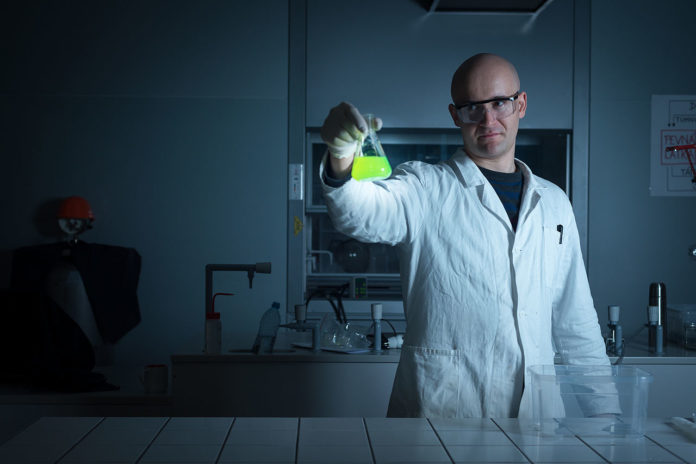
New compound shows promise as a broad-spectrum antifungal
Scientists have identified a compound, alexidine dihydrochloride with promising broad-spectrum antifungal activity, according to new research reported in the journal mSphere.
“There are currently only three major classes of antifungal drugs used in the clinic and several pathogenic fungi are resistant to them, so there is an urgent need to identify compounds that have novel molecular targets,” said principal study investigator Priya Uppuluri, PhD, assistant professor at Los Angeles Biomedical Research Institute at Harbor, University of California at Los Angeles (UCLA) Medical Center, Torrance, California.
Fungal pathogens are major causes of disease and deaths, causing over 2 million infections and killing 1.5 million people per year, despite treatment with antifungal drugs. Serious fungal infections due to Candida albicans, Aspergillus fumigatus and Cryptococcus neoformans pose a substantial threat especially to hospitalized immunocompromised patients and others with compromised immune functions especially in intensive care units (ICU). The three commonly used classes of antifungal drugs are polyenes, azoles and echinocandins.
Fungal pathogens are major causes of disease and deaths, causing over 2 million infections and killing 1.5 million people per year, despite treatment with antifungal drugs
The severity of infections caused by these pathogens is enhanced due to their ability to develop a multicellular structure of cells called “biofilms,” on a wide variety of indwelling medical devices including central venous catheters (CVC). Once formed, biofilms serve as a reservoir of cells that have direct access into the vasculature, and cannot be eradicated due to their completely drug-resistant properties. Cases due to new strains of multidrug-resistant fungi capable of forming biofilms, such as Candida auris have also been rising worldover. The Centers of Disease Control and Prevention (CDC) has proclaimed C. auris as a serious global threat.
In the new study, researchers tested several molecules in order to identify compounds capable of simultaneously inhibiting growth of C. albicans, C. auris, and A. fumigatus. They further prioritized inhibitors for their potency against other fungal pathogens including C. auris and on their ability to kill preformed biofilms.
The researchers identified Alexidine dihydrochloride, a drug approved as a topical antimicrobial and anti-plaque agent, as the drug with the greatest antifungal and anti-biofilm activity against a diverse range of fungal pathogens. This compound significantly potentiated the efficacy of the clinically used azole drug fluconazole against biofilms, displayed low mammalian cell toxicity, and eradicated biofilms growing in mice central venous catheters, in vivo. Their findings highlight the drug’s potential for use as a pan-antifungal drug.
“This is one of the first molecules identified that works as a pan-antifungal at very low concentrations, including against biofilms that are completely resistant to all drugs,” said Dr. Uppuluri.











[…] View Full Article […]
Comments are closed.